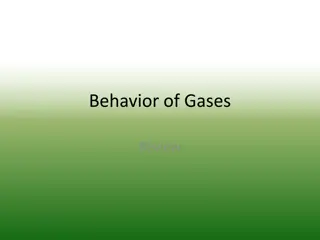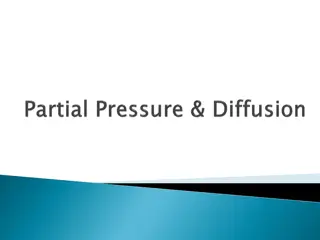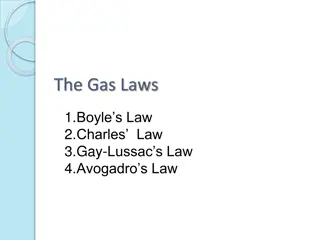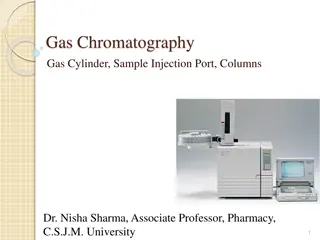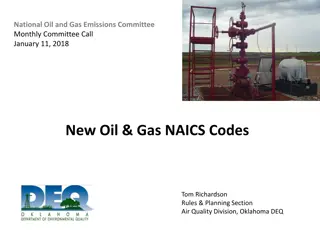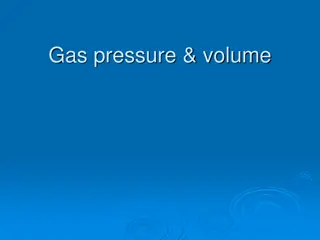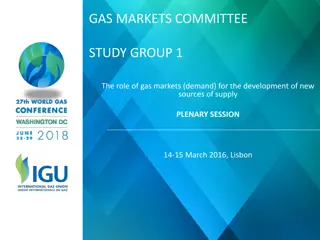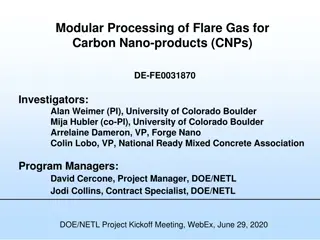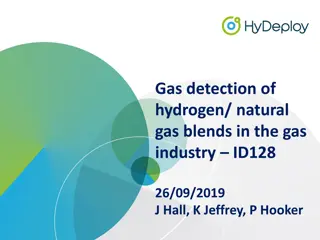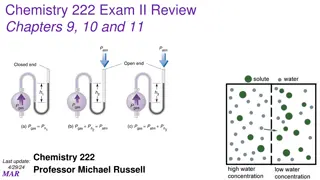
Understanding Gas Laws and Properties of Matter
Explore the characteristics of gases, the gas laws, and the properties of matter, including physical and chemical properties. Learn about the kinetic theory of matter and the unique properties of gases such as low density, indefinite shape or volume, compressibility, expandability, diffusivity, and pressure.
Download Presentation

Please find below an Image/Link to download the presentation.
The content on the website is provided AS IS for your information and personal use only. It may not be sold, licensed, or shared on other websites without obtaining consent from the author. If you encounter any issues during the download, it is possible that the publisher has removed the file from their server.
You are allowed to download the files provided on this website for personal or commercial use, subject to the condition that they are used lawfully. All files are the property of their respective owners.
The content on the website is provided AS IS for your information and personal use only. It may not be sold, licensed, or shared on other websites without obtaining consent from the author.
E N D
Presentation Transcript
Gas Laws Review CHARACTERISTICS OF GASSES AND THE GAS LAWS
Matter All objects are made up of matter Matter is anything that takes up space and has mass Properties are the specific characteristics that describe matter Matter can be identified using its specific properties All matter has the general properties of mass, weight, volume, and density Other properties are physical or chemical Physical: Does not change the identity of the matter Chemical: Changes the matter in determining the property
Physical Properties Physical properties can be observed or measured without changing the identity of the matter. Basically, properties you notice when using one of your five senses: Feel mass, volume, texture Sight color Hear Smell odor Taste sweet, sour, bitter
Chemical Properties A characteristic of matter associated with a change in its chemical composition. The process of changing one type of matter into another type of matter. A chemical change always produces one or more substances that are different from the original substance. Does the substance chemically react with something else? 1. Reactivity with oxygen : rusting (iron), tarnishing (silver, copper, brass, etc.) 2. Reactivity with water: 3. Reactivity with acids or bases: 4. Combustibility or Flammability: 5. Chemical formula (chemical composition): What something is made of is always a chemical property.
Kinetic Theory of Matter Matter is made up of constantly moving particles All particles have energy, energy is dependent upon whether substance is solid, liquid, or gas Temperature is a measure of the average kinetic energy of the particles There are spaces between particles of matter
5 Properties of Gases Low Density Gases contain a small number of particles dispersed across a particular volume Indefinite Shape or Volume Random motion of gas molecules allow them to expand or contract to fill the volume of their container Compressibility and Expandability Space between individual molecules can be reduced or increased Diffusivity Large space between molecules allows to or more gases to mix quickly and easily Pressure Gas molecule constant motion exerts a force on the interior surface of their container ???????? =????? ????
Assumption #1 Gas is composed of particles usually molecules or atoms Small, hard spheres Insignificant volume; relatively far apart from each other No attraction or repulsion between particles
Assumption #2 Particles in a gas move rapidly in constant random motion Moving in straight paths, changing direction only when colliding with one another or other objects Average speed of O2in air at 20 oC is 1660 km/h or 1030 MPH
Assumption #3 Collisions are perfectly elastic Kinetic energy is transferred without loss from one particle to another Total kinetic energy remains constant (conserved)
Mathematical Variables There are four commonly accepted gas law variables 1. Temperature 2. Pressure 3. Volume 4. Amount (moles)
Conclusions 1. When temperature is held constant, the density of a gas is proportional to pressure, and volume is inversely proportional to pressure. 2. If volume is kept constant, the pressure of a given number of gas particles is proportional to temperature 3. Holding pressure constant, causes the temperature of a gas to be proportional to volume, and inversely proportional to density
Boyles Law If temperature is constant As the pressure of a gas increases, the volume decreases For a given amount of gas at constant temperature, the volume of a gas varies inversely to pressure As volume increases, pressure decreases As volume decreases, pressure increases ?1?1= ?2?2
Charles Law As the temperature of an enclosed gas increases, the volume increases, if the pressure is constant. Volume of a fixed amount of gas is directly proportional to its Kelvin temperature, if pressure remains constant As volume goes up/down, temperature goes up/down ?1 ?1=?2 ?2
Gay-Lussacs Law As the temperature of an enclosed gas increases, the pressure increases, if the volume is constant The pressure of a gas is directly proportional to the Kelvin temperature if the volume remains the constant ?1 ?1=?2 ?2
Ideal Gas Law The relationships that we have discussed so far can be combined into a single law that encompasses all of them. 1 ? Boyle s Law ? ? ? Charles Law ? ? Avogadro s Law
Ideal Gas Law cont., The ideal gas law allows us to find one of the variables if we know the other three. ? =??? ? =??? ? =?? ? =?? ? ? ?? ?? The other gas laws are found in the ideal gas law if two variables are kept constant. R is called the gas constant. The value of R depends on the units of P and V. ? =??? ?3 ??? ? ??? ?= 0.082057 ??? ?= 8.2057?10 5 ? =?? ?3 ??? ?= 8.314472 ? = ??? ? ??? ?= 8.314472 ? =??? ??3 ??? ? ? = = 82.057 and others
Standard Conditions Because the volume of a gas varies with pressure and temperature, chemists have agreed on a set of conditions to report our measurements so that comparison is easy. We call these standard conditions. STP standard temperature pressure Standard pressure = 1 atm Standard temperature = 273 K = 0 C The volume occupied by one mole of a substance is its molar volume at STP (T =273 K or 0 C and P = 1atm). ? =??? =1.0??? 0.08206 ? ??? ??? ? 273? 1.0??? = 22.4? ?





